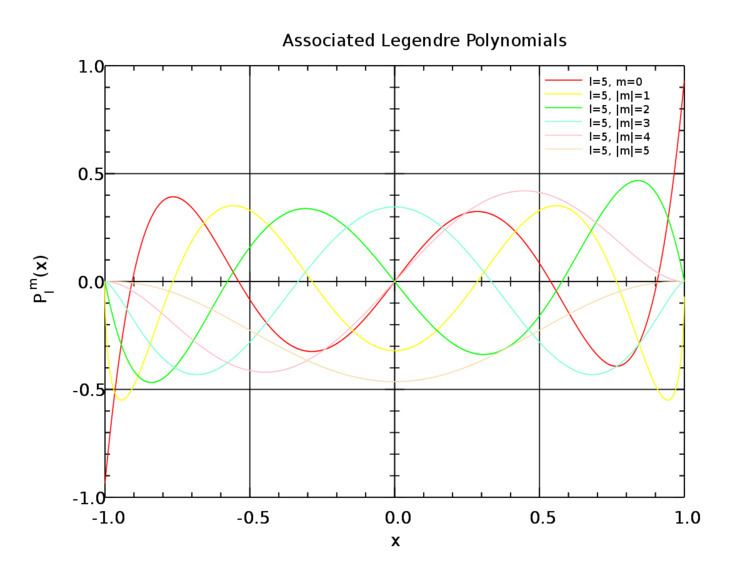 | ||
In mathematics, the Legendre functions Pλ, Qλ and associated Legendre functions Pμ
λ, Qμ
λ are generalizations of Legendre polynomials to non-integer degree.
Contents
Differential equation
Associated Legendre functions are solutions of the general Legendre equation
where the complex numbers λ and μ are called the degree and order of the associated Legendre functions, respectively. The Legendre polynomials are the associated Legendre functions of order μ=0.
This is a second order linear equation with three regular singular points (at 1, −1, and ∞). Like all such equations, it can be converted into a hypergeometric differential equation by a change of variable, and its solutions can be expressed using hypergeometric functions.
Definition
These functions may actually be defined for general complex parameters and argument:
where
The second order differential equation has a second solution,
Integral representations
The Legendre functions can be written as contour integrals. For example,
where the contour winds around the points 1 and z in the positive direction and does not wind around −1. For real x, we have
Legendre function as characters
The real integral representation of
where
